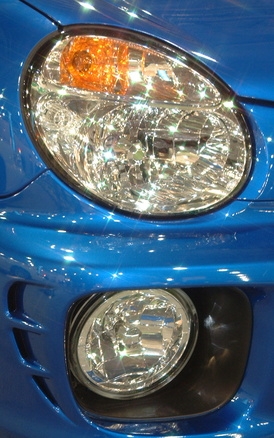
Torque specifications are put into place in order to prevent over-torquing of automotive components which can result in damages. Following torque specifications for the 2002 Subaru EJ20 WRX is especially important because this vehicle is modeled after a rally car and meant to be driven rough, which causes more stress than normal driving on engine and chassis components. The more stress that is put on the vehicle, the greater the likelihood that bolts and nuts can break or come loose if not properly torqued.
The majority of the torque specifications for the 2002 WRX are for bolts attaching components to the cylinder block. The camshaft positioning sensor, cover plate, crankshaft positioning sensor, oil pump and oil separator cover should be connected to the cylinder block with five foot-pounds of pressure. Some bolts connecting the cylinder block to itself should be torqued to 18 ft-lb.
The oil pressure sensor, timing chain and belt sprocket, and the tumble generator valve must also be tightened to 18 ft-lb. Torque of 3.5 ft-lb should be used for attaching the oil pan, oil pan baffle and timing chain and belt cover to the cylinder block while 29 ft-lb of torque should be used on bolts attaching the timing chain and belt pulley, for the idler pulley and tensioner pulley, to the block.
Do not not exceed nine nine ft-lb of torque when tightening the bolt that attaches the water pump to the cylinder block, while 17 ft-lb of pressure can be used when attaching the knock sensor. The oil cooler should be attached with 40 ft-lb of torque, the plug should be attached with 50 ft-lb of torque, and other connecting bolts for the cylinder block should be torqued at 35 ft-lb.
The camshaft needs to be connected to the cylinder head with 14.5 ft-lb of pressure while the ignition coil should be connected with 12 ft-lb of pressure. The spark plugs should be torqued to 15 ft-lb of pressure when connecting them to the cylinder head. Only seven ft-lb of pressure is needed when connecting the valve cover to the cylinder head.
The boost pressure sensor should be attached to the throttle body with 1.5 ft-lb of torque, along with the other side of the throttle positioning sensor. Do not exceed two ft-lb of torque when tightening the bolt that attaches the idle air control valve to the throttle body. The throttle body should be attached to the intake manifold with 16 ft-lb of torque.
When attaching the pulley to the crankshaft, 81.5 ft-lb of torque should be used. The flywheel should be attached to the crank shaft using 53 ft-lb of torque while the connecting rods should be attached using 33 ft-lb of pressure.
The bolt on the oil pickup tube needs seven ft-lb of torque to be tightened to the oil pump. The valve cover and oil separator cover are connected with a bolt tightened using five ft-lb of torque. The drain plug in the oil pan should be tightened using 33 ft-lb of pressure.
Apply six ft-lb of torque when connecting the intake manifold to the tumbler generator valve. The exhaust manifold and the turbocharger are connected to the exhaust pipe using 26 ft-lb of torque.
Use 12 ft-lb of torque when attaching the pressure plate to the flywheel. The fuel rail should be connected to the intake manifold using 14 ft-lb of torque. No more than 72 ft-lb of torque should be used when tightening the bolt that attaches the timing chain and belt sprocket to the camshaft.